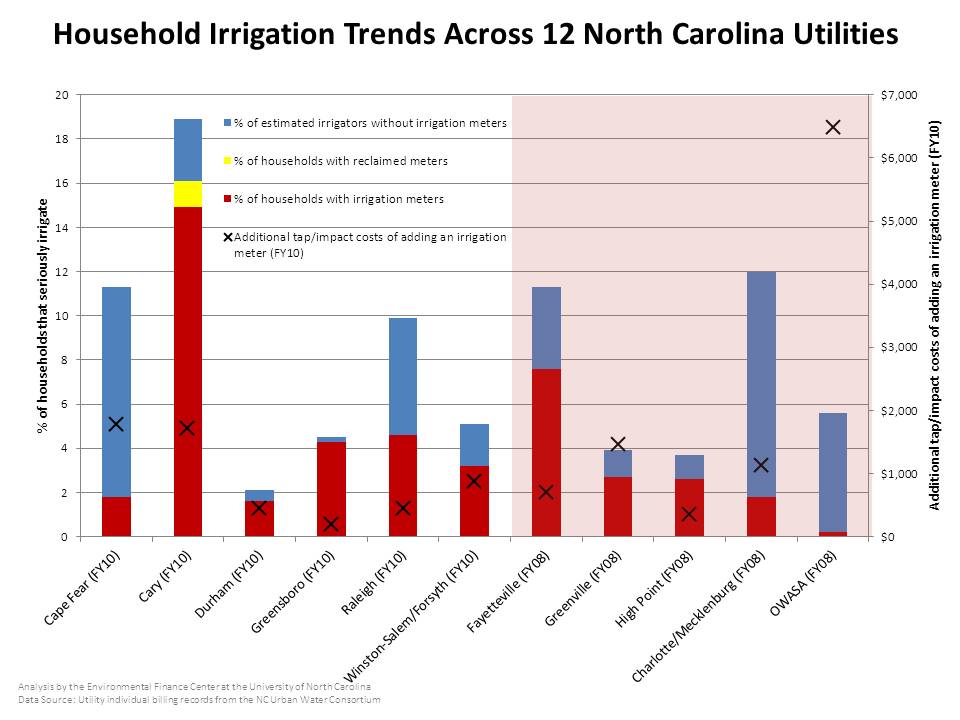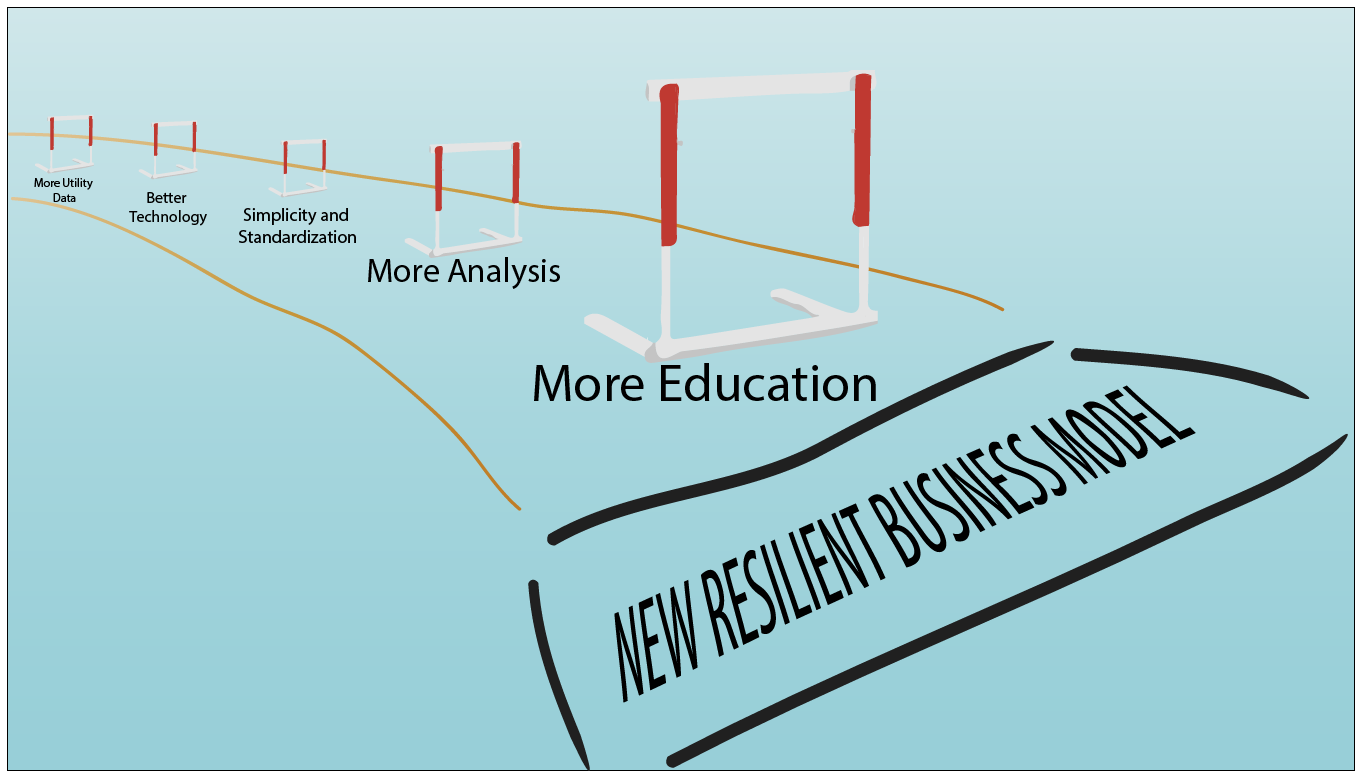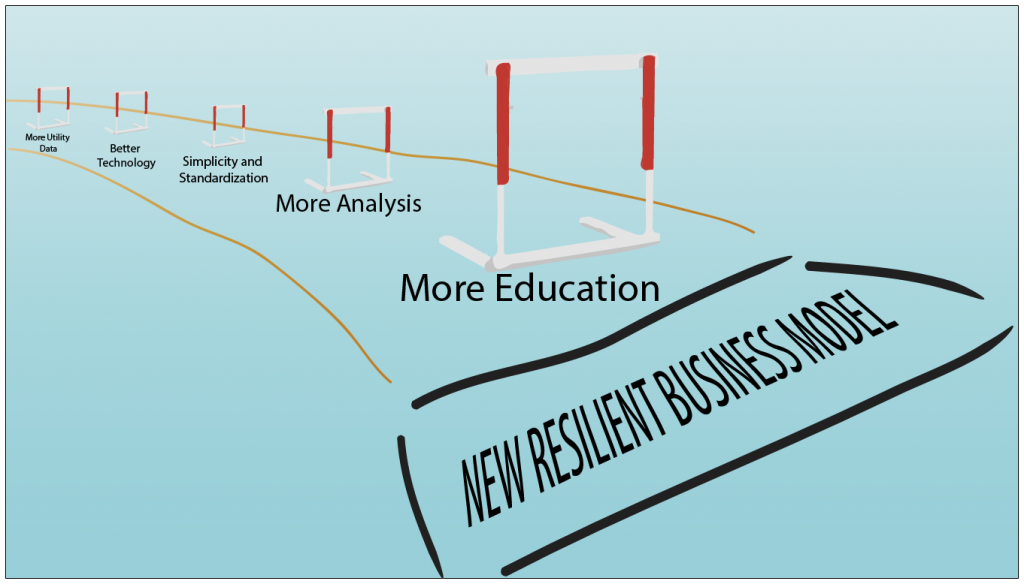Mary Tiger is the Chief Operating Officer for the Environmental Finance Center at UNC.
Over the past four years, the Environmental Finance Center (EFC) conducted in-depth analysis of residential customers of some of North Carolina’s largest water utilities, represented by the Urban Water Consortium. Across the state, we “sliced and diced” customer data and presented each utility with a profile of its customer base from a number of different perspectives. In working with each utility, we have found that one of the most useful and enlightening perspectives we provide is that of households that are significantly irrigating through their standard meter.
Every utility in the North Carolina Urban Water Consortium offers separate meters for irrigation purposes, and under North Carolina law, separate irrigation meters are required for all newly plotted land with an in-ground irrigation system. Despite this, irrigation meters are not capturing all of the water used for irrigation in each of these utilities. In fact, in some cases, they are not capturing the majority of water used for heavy irrigation.
Our analysis attempted to capture the number of customers and amount of water likely to be attributed to heavy irrigation (i.e. using in-ground irrigation systems, not simply hand watering). The EFC used billing records to estimate how many existing residential customers were using a standard meter to supply water to an in‐ground irrigation system. This was done by looking at the water usage patterns for those households that did have irrigation meters and finding households without irrigation meters that had similar patterns.
The graph below shows the percent of customers that the Environmental Finance Center estimates to be irrigating through in-ground irrigation systems. As noted after the name of each utility, they are taken from different years.
The red area represents the customers that are irrigating through an irrigation meter. We assume that this group of customers will continue to grow as a percentage of the whole as all newly plotted lands with in-ground irrigation systems will be required to separately meter their irrigation water use. The yellow area represents customers that irrigate with reclaimed water. Currently only the Town of Cary pipes and meters reclaimed water directly to residential customers.

Click to enlarge
The blue area represents the group of customers that the EFC estimates to be irrigating through their standard meter. As the graph indicates, this group of customers varies significantly among the UWC members. The black “x” indicates one reason why this variance exists. This marker aligns with the additional costs to households to install a separate irrigation meter in FY10. For the utilities that fall under the shaded portion of the graph, the assumed irrigators were identified during a drought year, which may have resulted in an over- or under-representation of households irrigating from standard meters (depending on individual utility restrictions on outdoor water use). However, there are many other reasons why households were encouraged or discouraged to connect their irrigation system to a separate meter, including rate discrepancies and utility policies. The Environmental Finance Center recently published an article in Journal AWWA
[1]exploring this issue.
These standard-metered irrigators have serious implications for utilities. For one, if they are indeed irrigating with an in-ground irrigation system, they should have a proper backflow prevention system installed and be conducting required maintenance of that system. In addition, it is important to know what water (and revenue) is at stake if the utility experiences a particularly wet or dry year that will influence irrigation demand.
More discussion on residential irrigation can be found at: http://www.efc.unc.edu/projects/irrigation.htm







